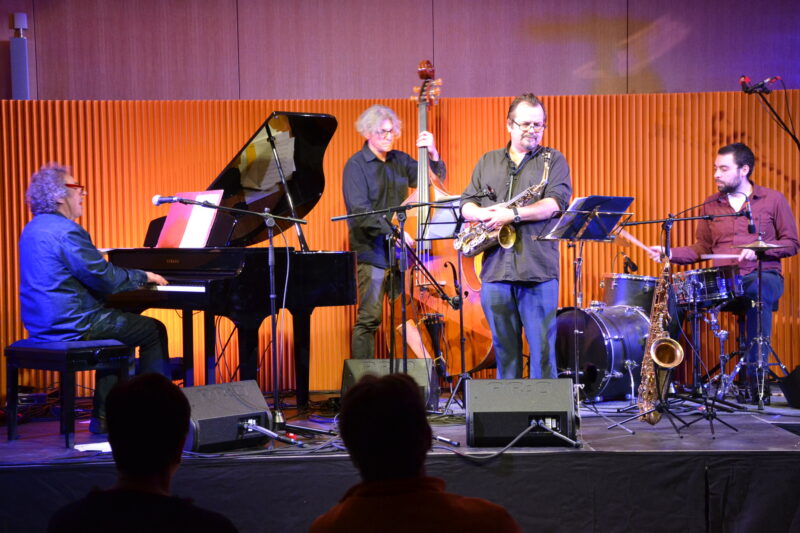The Anthelonious Jazz Quartet presents the music that Antonello Marafioti composed from 1985 until now. New compositions are coming up. The original Jazz repertoire of the Anthelonious Jazz Quartet covers many styles of Jazz, from BeBop through Modern Jazz till Latin Jazz.
At the beginning of his career Antonello Marafioti was very much influenced by the music of Jazz pianist Thelonious Monk. That’s why he got the nickname Anthelonious.
At this time the Anthelonious Jazz Quartet is composed by
Antonello Marafioti: Piano, composition and arrangement
Roberto Manzin: Saxes
Carmelo Leotta: Double bass
Davide Marafioti: Drums
Blues On is a 12 bars blues in F in the mood of Thelonious Monk. The first 8 bars are based on bc ef, heard on a solo of Thelonious Monk on his composition “Well you needn’t“, the last four work on the whole-tone-scala, a typical characteristic of Monk.
New Days is a Bebop composition based on the changes of the first part of the Henry Mancini‘s song “The Days Of Wine And Roses“. The typical Bebop melody was written thinking of Lee Konitz and Lennie Tristano.
Spring Leaves is a kind of evolution of “Autumn Leaves” of Joseph Kosma. The modal treatment takes it very far away from the original inspiration. The form is AABCA. The “C”-section shows a typical hard bop line on the changes of Giant Steps by John Coltrane.
Wintertime was composed in the same periode of Spring Leaves. It is an evolution of “Summertime” by George Gershwin of wich it preserves the form ABAC. The “A”-sections are characterized by a “New Orleans”-rhythmed Bb7; In the “B”-section we can find Coltrane changes again.
Walking On was inspired by the use of mordents of Mal Waldron, a Jazz pianist Antonello Marafioti met several times and respects a lot. The last two bars of the 12-bars-form are always a collective free improvisation and remind to some Mingus sounds.
A Presto Vladi is a ballad wich was originally composed for the successful movie “Goodbye Lenin“, where it is played as a Bossa. Also in this tune you can recognize several influences wich don’t take the originality of the composition. Form AABA. The “A”-section starts similar to “Peace” of Horace Silver. Like “Body and Soul” the bridge rises a halftone up.
